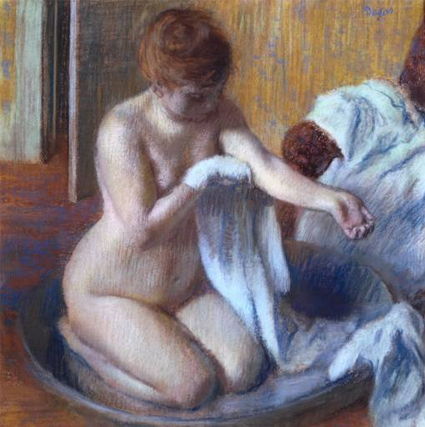As Degas's ballerinas and nudes disport themselves at the NationalGallery, Andrew Graham-Dixon detects the art beneath the artist's artfulness
"Beyond Impressionism" is the title of the National Gallery's late Degas exhibition, but it does scant justice to the sheer extent of his beyondness. Degas in late life was beyond Impressionism and Post- Impressionism; and he was beyond caring. The only thing that mattered to him was his work, and its theme was, to borrow Raymond Carver's words, "Life, always life."
Life takes many forms in late Degas - so many forms that you often have the sense that even the painter himself cannot quite believe the riches he has stumbled upon, so late on - but the life in question is almost invariably female. Dancer with Bouquet, from the Chrysler Museum of Art in Norfolk, Virginia, is one of the exhibition's curtain-raisers. In the painting, the curtain has just fallen on the ballerina's performance and she is enjoying her applause. Done sometime in the 1890s, when Degas entered his sixties, it is one of his subtlest essays on the touching awkwardness of human beings.
The dancer, seen from the side, is in mid-curtsy. Her face has been slightly smeared by the artist as he painted it, especially about the lips and above the right eye - perhaps because a certain type of striving for verisimilitude had come to bore Degas; perhaps because he wanted to convey movement. Her expression is set in the type of puzzling, inadvertent rictus that hastily taken photographs often catch. Her dress blends in with the painted theatrical backdrop seen blurrily behind her - some Arcadian scene of woods, mountains and lakes at sunset. She has her back to the illusion of which she has just been part and two bouquets of roses the colour of...


